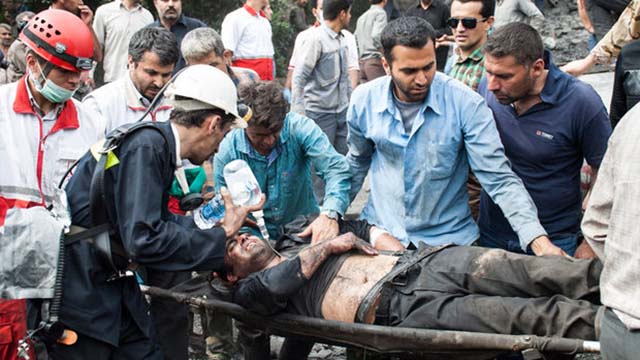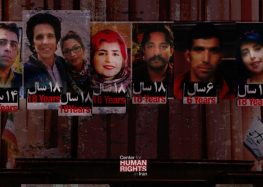Deadly Coal Mine Explosion in Iran: Who’s Responsible?

The employer, and possibly the government are legally liable for the explosion at a coal mine in northern Iran that killed more than 30 workers and injured dozens on May 3, 2017, a legal expert told the Center for Human Rights in Iran (CHRI).
“The laws in Iran, particularly the Labor Law, include safety requirements in mines that hold employers responsible for the safety of their labor force during work,” said Hossein Raisi, a former attorney in Iran who currently lives in Canada.
“There are no legal loopholes in these cases,” he added. “It’s a given principle that employers are responsible for any accidents in the work place. Employers must anticipate accidents, take precautions and monitor the work place to ensure safety.”
The accident took place in the Zemestanyurt mine, 9 miles from Azadshahr near the Caspian Sea in Golestan Province. Labor and Social Welfare Minister Ali Rabiei said a special committee has been set up to investigate the causes of the tragedy.
The mine, owned by private and state shareholders including Industry, Mining and Trade Minister Mohammad Reza Nematzadeh, employs about 500 workers.
Article 91 of the Labor Law states: “Employers and officials of all units… shall be obligated… to provide necessary facilities for the safety, health and hygiene of the workers in the working environment, and put the same at their disposal.”
Article 225 of the Safety and Protection Regulations in Mines forbids “any action that could cause sparks or flames in coal mines where flammable gas and dangerous dust are present.”
Article 318 meanwhile requires employers to train their work force on how to measure methane and carbon dioxide levels to avoid danger.
Faizollah Kakouie, the operator of the Zemestanyurt mine where the accident took place, told the semi-official Iranian Labor News Agency (ILNA) that the explosion happened when workers tried to restart a locomotive.
Raisi, the attorney from Iran, told CHRI employers are required to implement safety measures for all scenarios.
“There’s always the possibility of fires or explosions in dangerous work environments, such as mines,” he said. “That’s why the mine safety regulations and the labor law require employers to take safety precautions to protect workers’ lives.”
The Labor Ministry would also be responsible for the deadly accident in Golestan Province if it failed to properly inspect the site.
“The authority in charge of supervising workshops and mines is the ministry’s Work Safety Inspection Board, which is supposed to visit sites and report any safety violations and take action if necessary,” said Raisi. “If an accident occurs because of the board’s failure to carry out its duties, then it would be responsible along with the employer.”
Miners Say Safety Concerns Ignored
“We complained a hundred times about safety issues,” said one of the workers at the Zemestanyurt mine on the day of the accident. “This is all the private employers’ fault. All they think about is coal and money. They don’t care about my life.”
Mohammad Reza Bahraman, the chairman of Iran’s House of Mines, said on May 4 that according to the most recent safety ratings, the Zemestanyurt coal mine was in “relatively good shape” and “received acceptable grades” for safety and equipment conditions.
However, Mining Minister Nematzadeh, a shareholder in the Zemestanyurt mine, said on May 4 that “we have to investigate statements by some workers that some of the gas detectors were faulty.”
Nematzadeh added that the mine’s major shareholders included some 5,000 retired miners, the Basij paramilitary force, and a company affiliated with the Isfahan Steel Plant.
A day before the accident, the semi-official Mehr News Agency published a report describing Iran as “one of the most accident-prone countries in the world” for workers, with 815 work-related deaths reported in 2015.
The report quoted Alireza Mahjoub, member of Parliament and secretary general of the state Workers’ House, stating that Iran ranked “second or third” in the world for having the worst safety record.
April 28—five days before the tragedy at the Zemestanyurt mine—was the World Day for Safety and Health at Work, organized by the International Labor Organization, to focus on “the critical need for countries to improve their capacity to collect and utilize reliable occupational safety and health data.”






